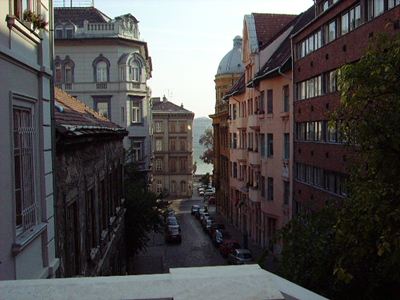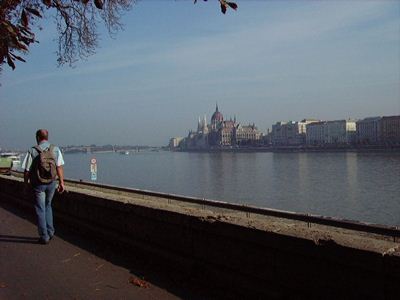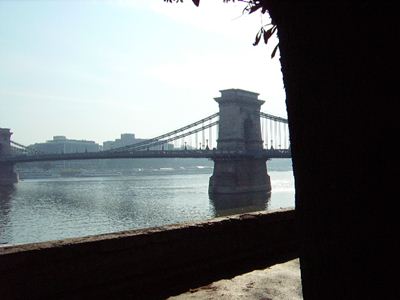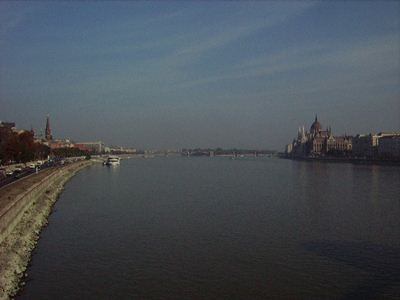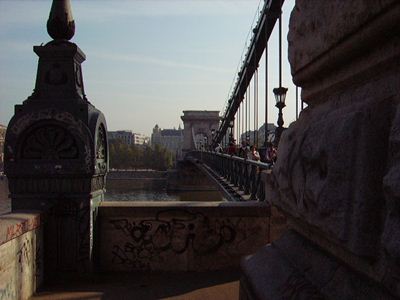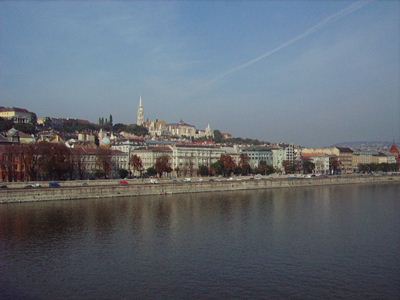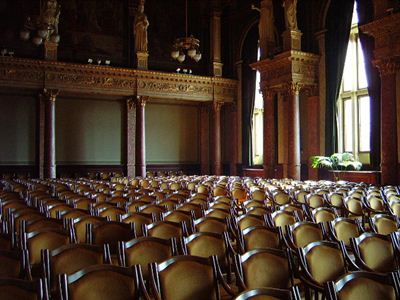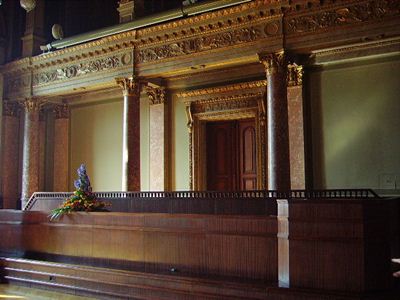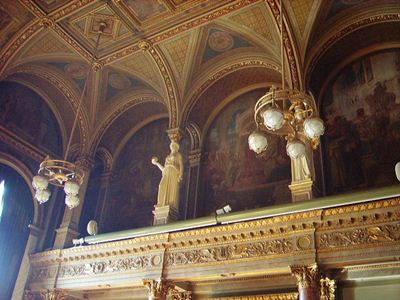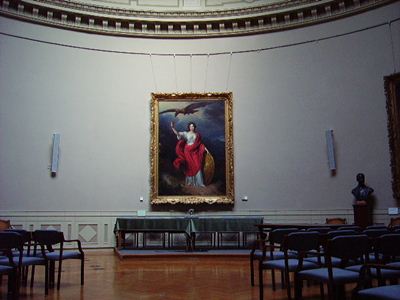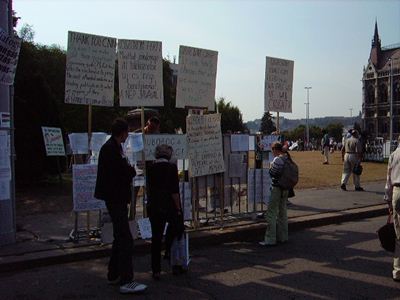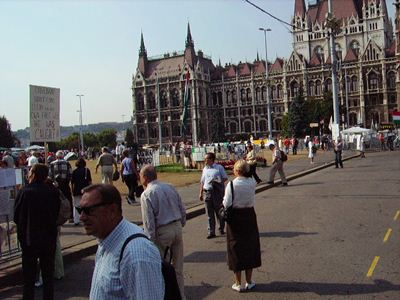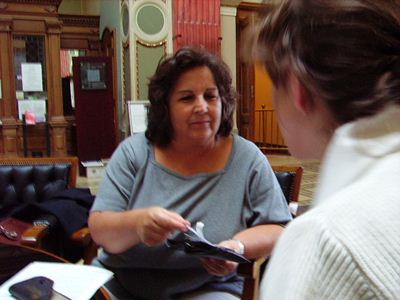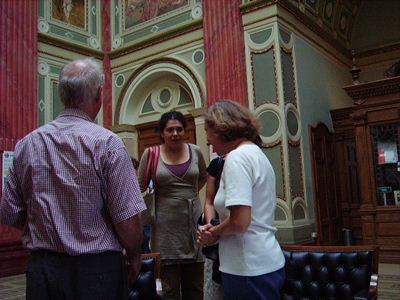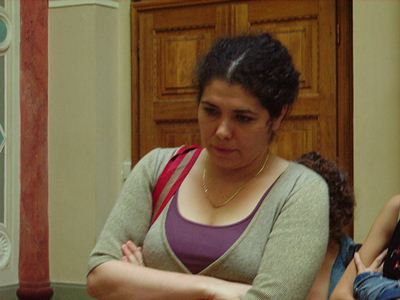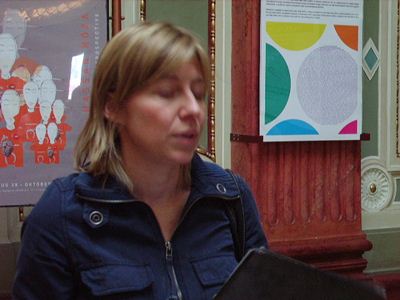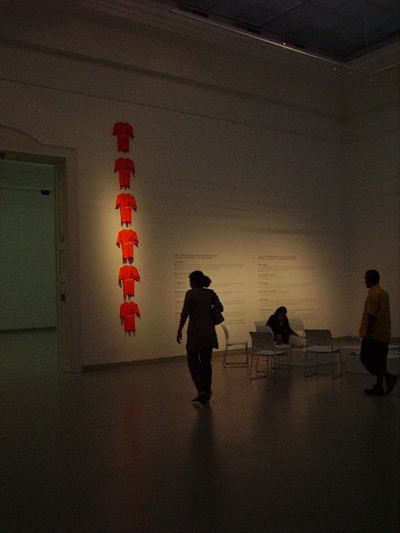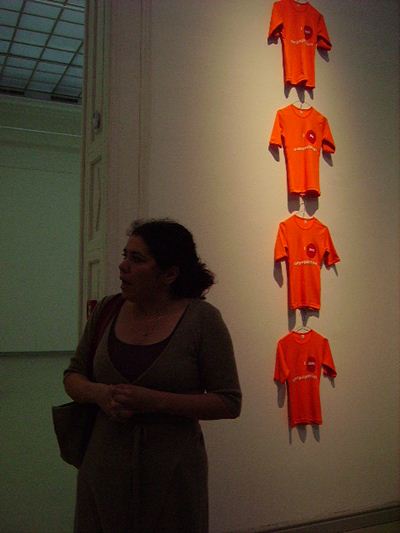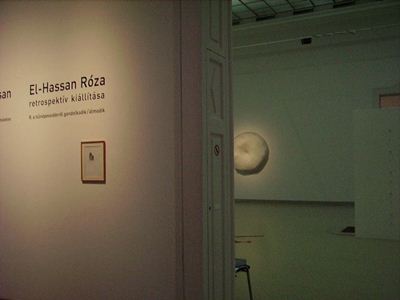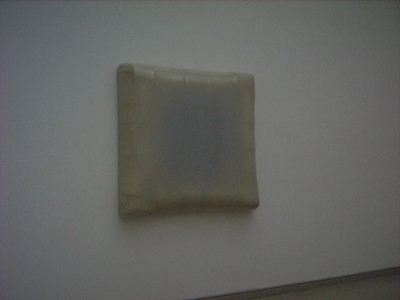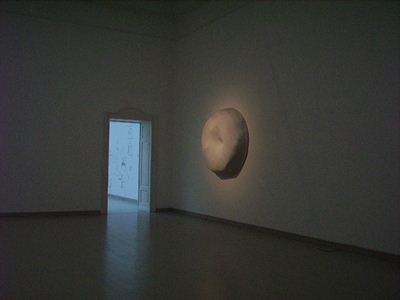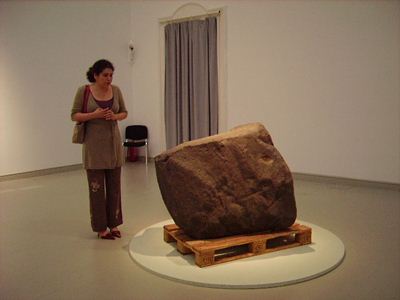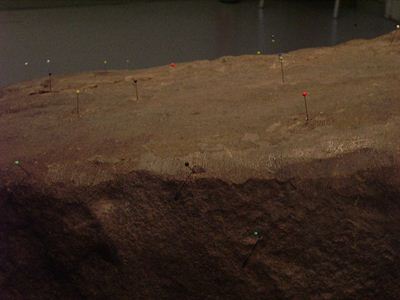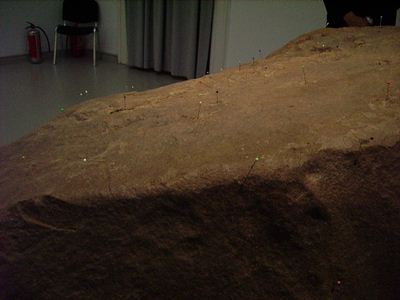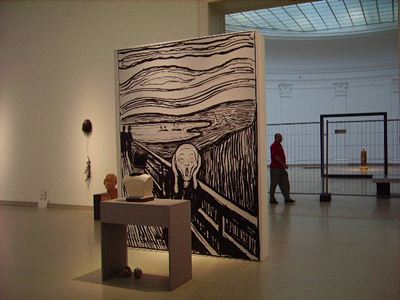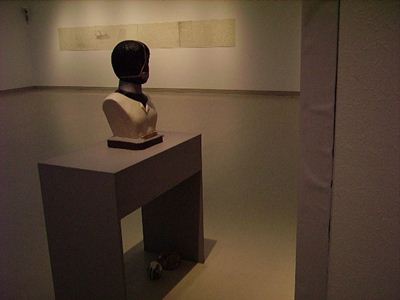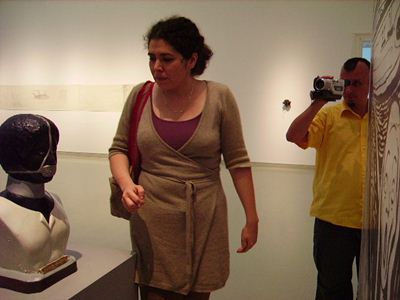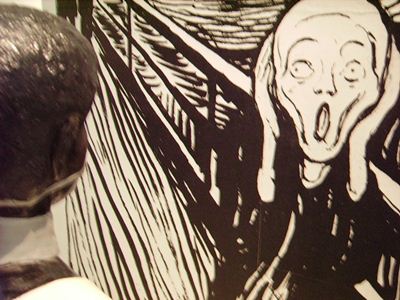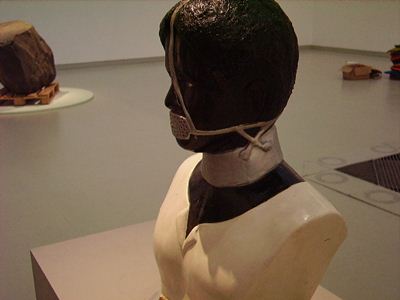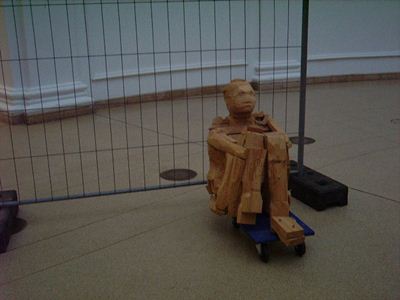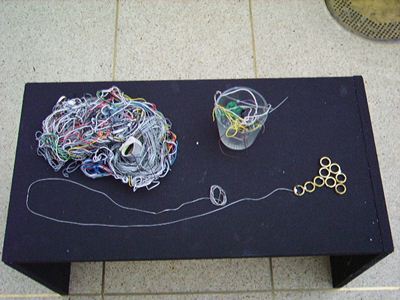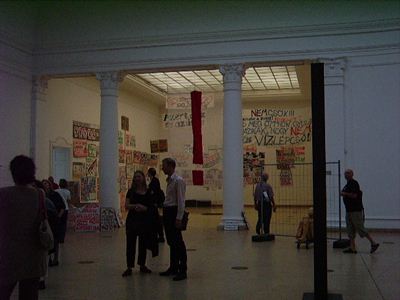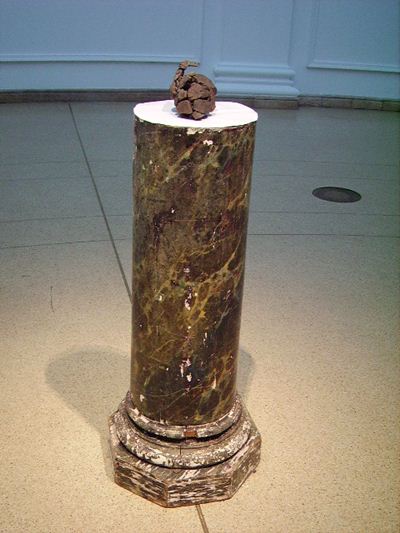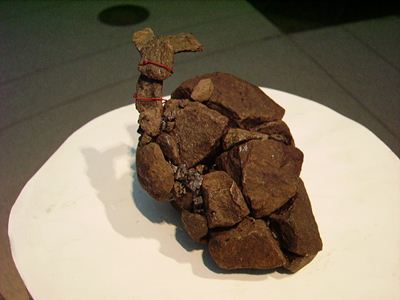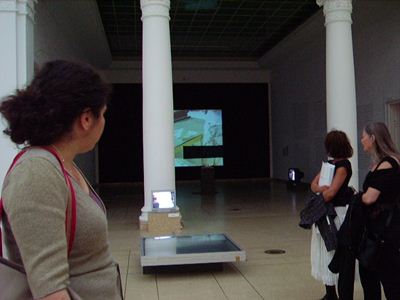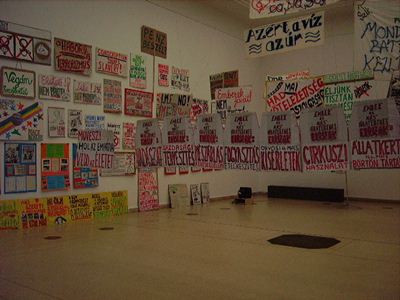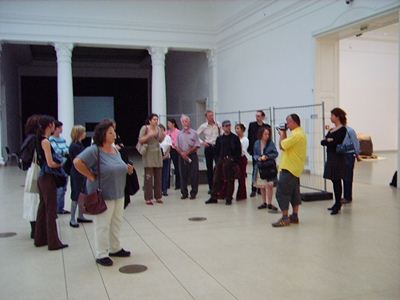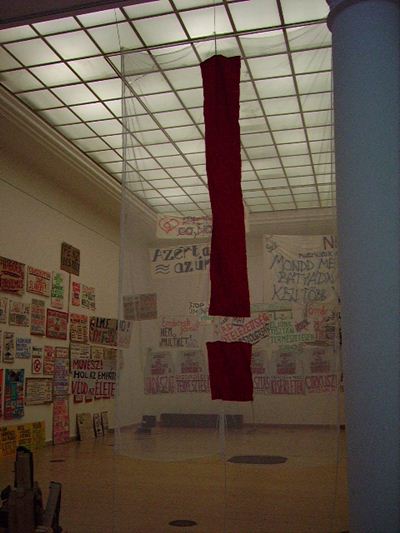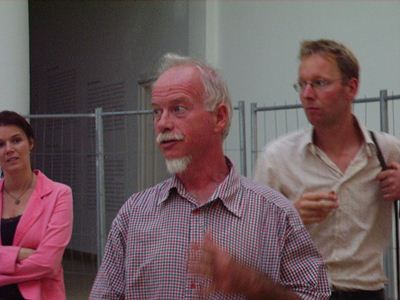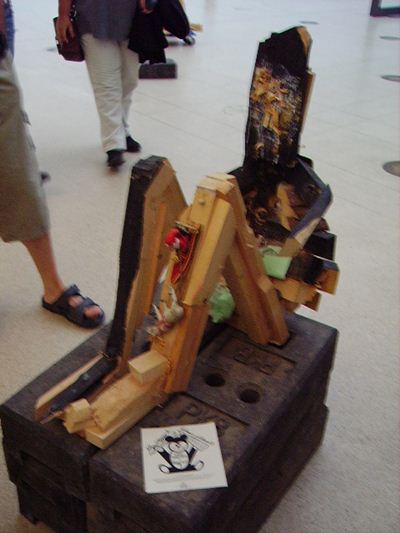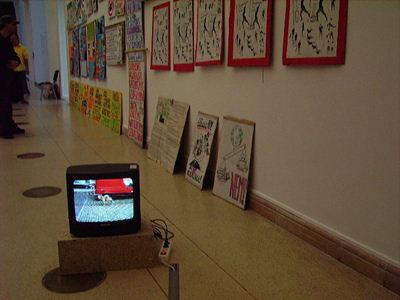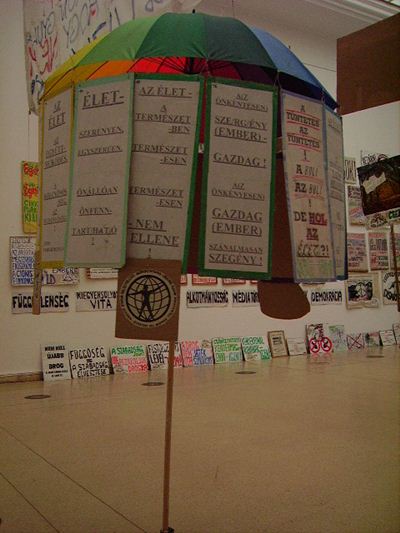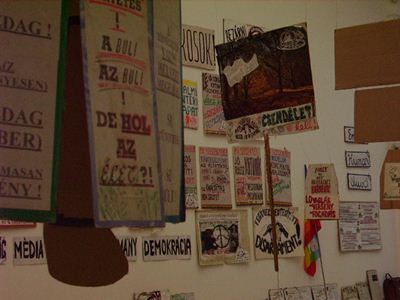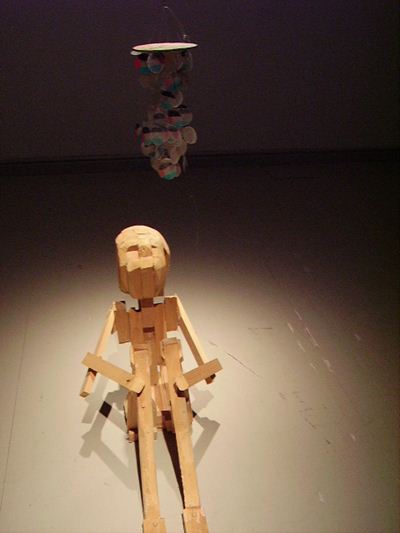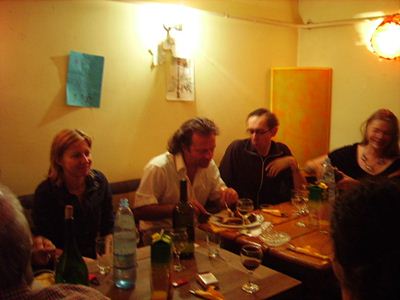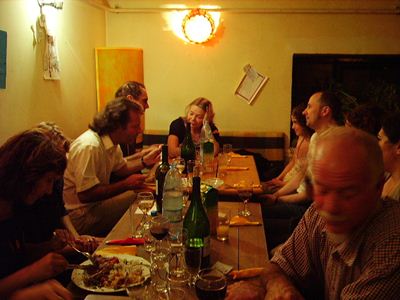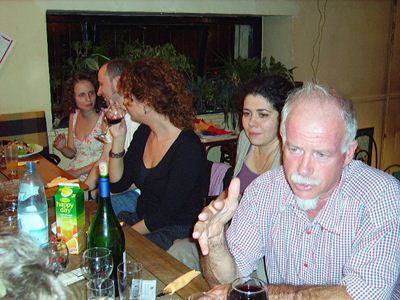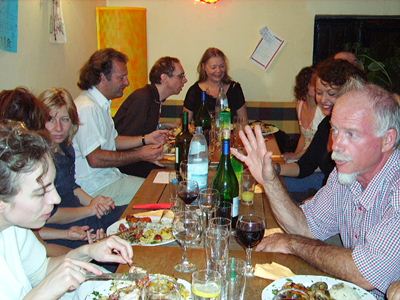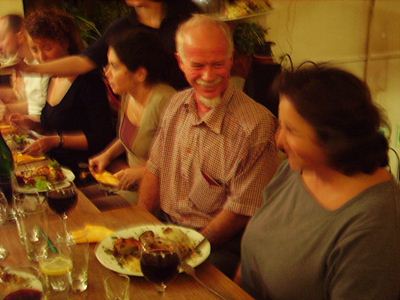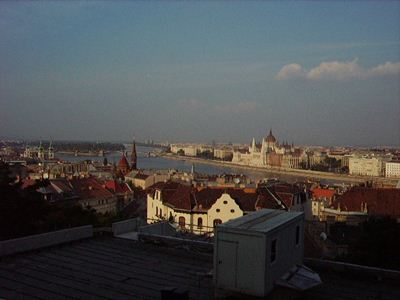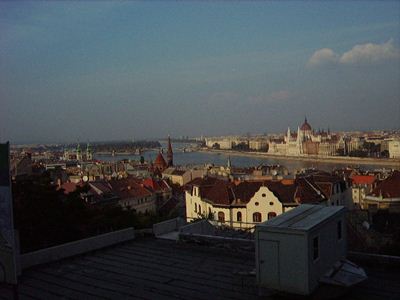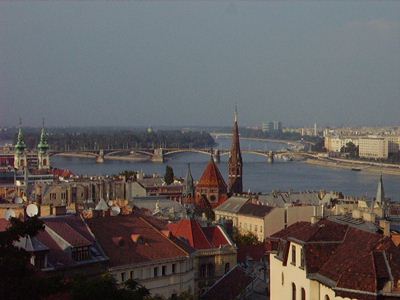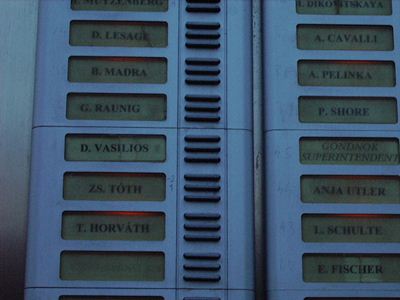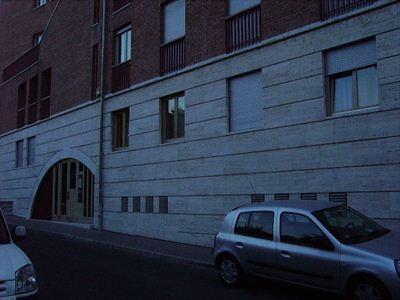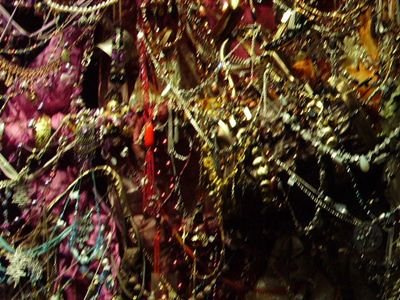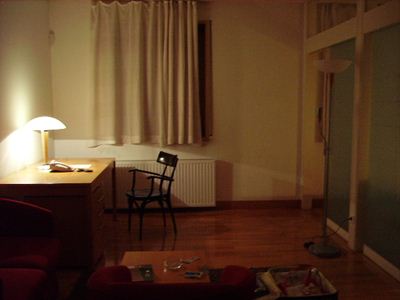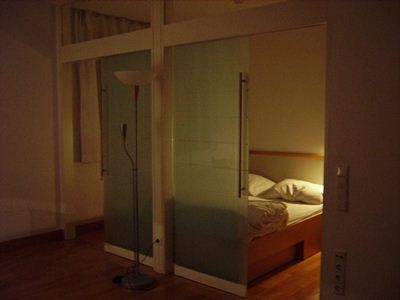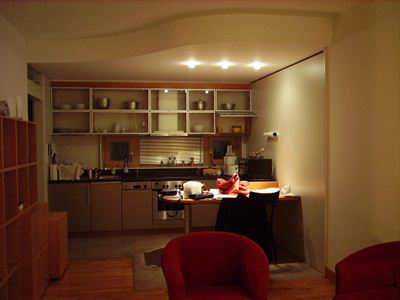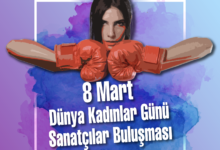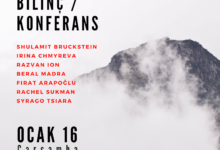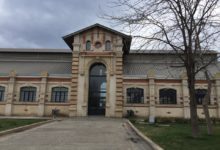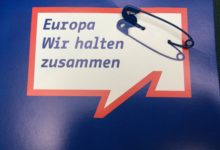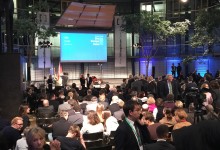The Aesthetics of Resistance
Sympoisum organized by tranzit. hu on the occasion of Róza El-Hassan’s Retrospective in the Műcsarnok / Kunsthalle, Budapest
(27 July – 1 October 2006)
Date: 29-30 September, 2006
Location: Műcsarnok / Kunsthalle, Budapest
Concept: Róza El-Hassan, Dóra Hegyi, Bea Hock
Organizer: tranzit. hu
Co-organizer: Agency for Contemporary Art Exchange (ACAX), Budapest
Participants:
Róza El-Hassan Budapest, Éva Fodor Budapest, Dieter Lesage Brussels-Berlin, Arab Lotfy Cairo, Beral Madra, Istanbul, Gerald Raunig Vienna, Pál Szacsvay, Budapest, Emese Süvecz, Budapest, Milica Tomic- Branimir Stojanovic, Belgrade.
STATEMENT FOR “THE AESTHETICS OF RESISTANCE”FORUM, MÜCSARNOK KUNSTHALLE, BUDAPEST
SEPTEMBER 2006
The current global-scape shows hells and paradises developed by people and societies of so called different cultures or dissident cultures who are in turn obliged to endure its consequences. Against the motto of globalization that cultures are in mutual understanding and reciprocity, this division exists between regions, countries and within all societies, fluctuating in dimension and in enormity of abuse ranging from repression, violence, war and terror.
Yet, it is also amazing that artists and art events still occupy a unique role in the global context– even in the most chauvinistic countries – and create the civilized face of humankind.
Local and international biennale, continuous networking, residency programs, traveling exhibitions, virtual space information and collaboration are the labels and designations of this fact.
Through a diversity of approaches, which vary from criticism, opposition, confrontation to resistance the artists and art people explore and reveal new environments and behaviors that words alone are incapable of describing and the media is powerless in simulating.
The conviction that in the long run, art theory and art making can tackle issues, stir activity and divert the public attention is still prevailing. It is still believed that art and art making can help to create solutions to conflicts and even serve as a psychological mapping that can help social anxieties come out in the open. Particularly in political conflict regions and in crisis moments most artists and art people work for social and environmental justice. This activity may not be instantly visible, but beneath the surface it builds a resisting web.
The new agenda in the contemporary art production means that the artist and the curator look deeply into the thought, soul and behavior of individuals in culturally different societies within the context of globalization.
This new agenda requires a new philosophy and aesthetics which points to existing conflicts and conditions of mutual oppositions that call for war or resolution. The new philosophy is routed in empathy and reciprocity; that means artists and curators travel into the labyrinths of the common psychology and behavior of the society, into the complex nucleuses of the city and into the backstage of local politics.
The opposing conditions of current life are reflected in art works as universal correlations or incongruities of the conflicts in different cultures and acquire anthropological insight into human nature and behavior.
The mobilized artists and curators articulate within the politics of different and global. The global (or universal) makes it possible to recognize and show the particular; even if the particular does not mean unique in the modernist sense, but has its own complexities.
The artists and curators are able to accent the particular as a vital alternative to the viewer. Current aesthetics with its undeniable 20th century background/memory is used as an exploration and challenging way of the relationship between the global and the local.
Global/universal serves as a ground of reconciliation and gives meaning to the particular represented in a work of art.
The new agenda for aesthetics is about how each side of the antinomy, of the conflicting groups of people becomes revealed in the other.
Repression, violence, injustice and other social ills are endured but quickly overlooked, dismissed or reckoned to be inevitable and unchallengeable. These problems are acknowledged all over the world, but in non-democratic or semi-democratic countries resistance to them is uncoordinated and inadequate.
Art, in these to be democracies and more obscure territories is being utilized as a coordinating tool to deliver a message or inspiration or information for the disempowered. Resistance art – which is in fact all art forms practiced in these territories-brings hidden knowledge out of the shadows. The historic roots, DADA and Fluxus, even if they are remote and foreign, give the artists many possibilities and experience models to penetrate into the social strata and daily life.
This has been the case inTurkeythroughout the 80’s and 90’s and currently in the so called global South with its complex political, economical and social development. A new aesthetic of resistance is developing since the end of the cold war in South Caucasus and post-SovietAsia; when the political agenda allowed individuals to build up their own agendas.
In most of these countries contemporary art is practiced outside of the official cultural policy and institutional culture i.e. the culture industry is schizophrenically divided into official and private spheres. The art practice and art making is exposed to the requirements of private sponsors and corporate culture policy. That means that artists and art experts are obliged to build multi-faceted strategies.
The aesthetic of resistance grows out of daily shifting realities and conditions either on the level of logistics of the art work (that means where and how it is presented) or on the level of statement and form (that means to find the most effective tool, style and form to present it).
The ideological edge and the critical meanings grow out of the stronger links of the artist to the life of the diverse communities in the city. One of the important aspects of the art of resistance is the reemergence of drawing/painting as a practical artistic medium, the exploration of humor and eroticism in art, and the regionalization or nationalization of Pop art.
Statements, messages, metaphors and stories can be conveyed in many forms like T-shirts, comics, zines and street actions with NGO’s, to more elaborate form like performances, in situ installations video and film shows and many other approaches, that are mainly realized in public spaces. Particularly young generation artists make art which is immersive and engaging; which can help build community and involve the viewer in rituals or processions; which can be an individual or collective effort; which is public or anonymous or clandestine. They continuously explore and find many alternatives to show their work to larger audiences. Another approach is to present the reality of a situation in a semi-documentary style.
As examples to these thoughts, I will show images of several exhibitions and artists initiatives: Art Caucasus,Tbilisi, 2005, Aluminum,Baku,2005, AConsumption of Justice,Diyarbakır, May 2005; Sinopale August-September 2006, PİST, YAMA, Galata Perform,Istanbuland RadikalArt.
Beral MADRA, September 2006

